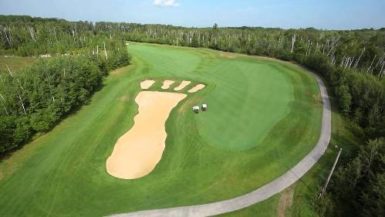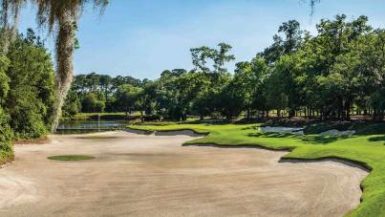Like many industries, golf development has been severely curtailed by the economic downturn. Some planned projects are struggling for funding. Some which were ready to break ground are on now on hold. Some which recently opened with high price points struggle for rounds or reduce fees dramatically
Yet some golf architects have viable solutions. “Minimalism,” a movement in golf architecture which moves as little earth as possible, also cuts costs significantly. Minimalism has blossomed in the last 10-15 years with designers such as Tom Doak, Gil Hanse, and the team of Bill Coore and Ben Crenshaw opening one great design after another. In a recession, such an approach may be the most viable solution. Other architects, like Colorado’s Jim Engh consistently come in on time and under budget, while winning one “best new course” award after another.
“The fall of credit, the decline in the stock market, and the over-saturation of homes have made it so few projects are on-line right now, but golf will come back,” said Engh. “However, it will look different for some time. Courses will have to be built on shoe-string budgets and be more economically viable.”
Engh’s new course in Kearney, Nebraska is one of only a handful of golf courses being built in the U.S. right now. Starting with the routing of an old 9-hole layout called Kearney Hills, he is fashioning a new 18-hole course through pristine land in the Nebraska sand hills called Awarii Dunes.
“It has rolling sandy linksland, the best terrain for golf. With that terrific dunescape for both a backdrop and the natural features for the golf course, I was able to recreate my impression of what Irish golf is all about,” Engh recalls.
The green sites and fairway contours will follow the lay of the land much like Ben Crenshaw and Bill Coore’s fabled Sand Hill Golf Club. Like Sand Hills, Engh believes he will only need to move about 5000-10,000 cubic yards of earth to build the course. Engh’s courses on other sites average between 200,000-300,000 cubic yards of earth moved: a small amount by modern standards.
“I’m excited because we are able to build a course that has a unique identity, and we were also able to keep the project on time and under budget in a tough economy. Moreover, I have set a paramount on walking. Cart paths will be green to tee only and consist of a mixture of native sand and small gravel. Tee placements have been located for ease of access from the previous green,” Engh said.
Indeed, Engh has been wildly successful at coming in on time, under budget, and building a course which not only reflects the history and natural setting of the site, but protects its natural resources. Fossil Trace Golf Club in Golden, Colorado preserved and protected the precious 12 million year old dinosaur and vegetative fossils located on the property, his highly acclaimed Redlands Mesa winds through the stunning striated red rock canyons of western Colorado, and the private Blackstone Golf Club in Peoria, Arizona, near Scottsdale, winds it way through tall native saguaros, rare ocatilla, fragrant palo verde, and dangerous jumping cholla.
Even with all these successes, four best new course awards in all, Engh is excited about the prospects for Awarii Dunes. “It’s definitely a minimalist project, and I don’t normally use that word, but we just were able to leave what nature provided there. Moreover, it’s cost effective. Going forward in a tough economic climate, most designers will have to avoid exorbitant price tags, yet still give the course an identity that fits with their region on which the course will be built.”




